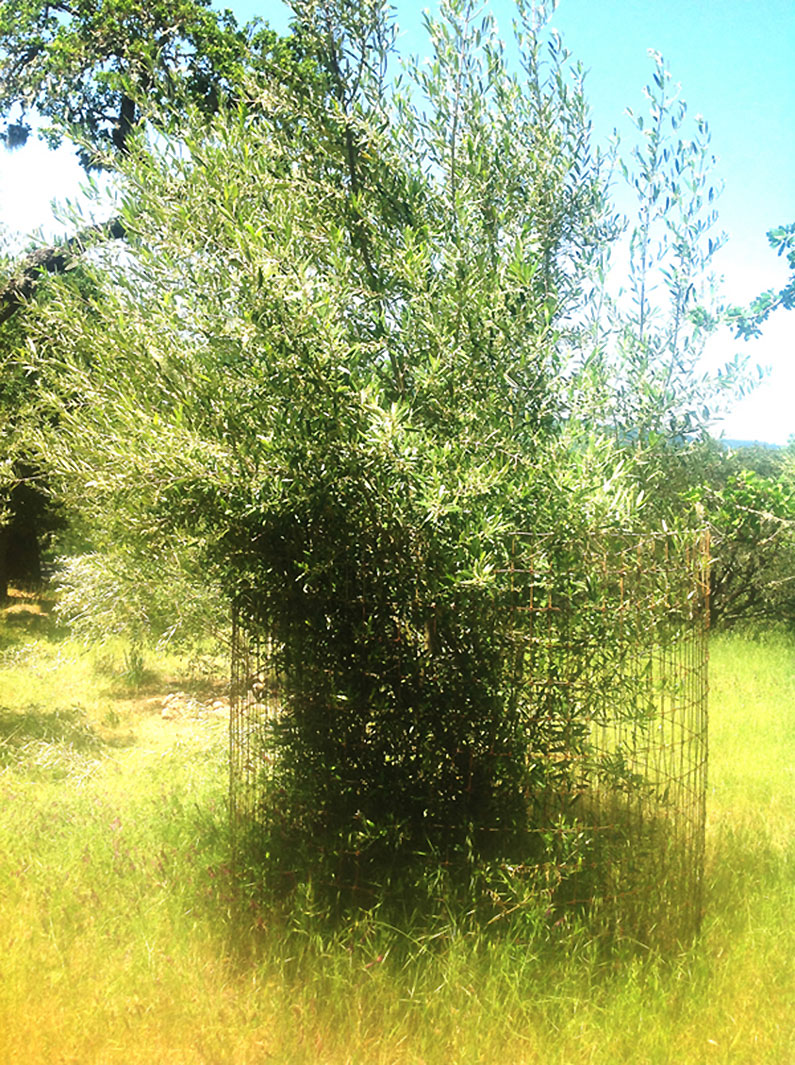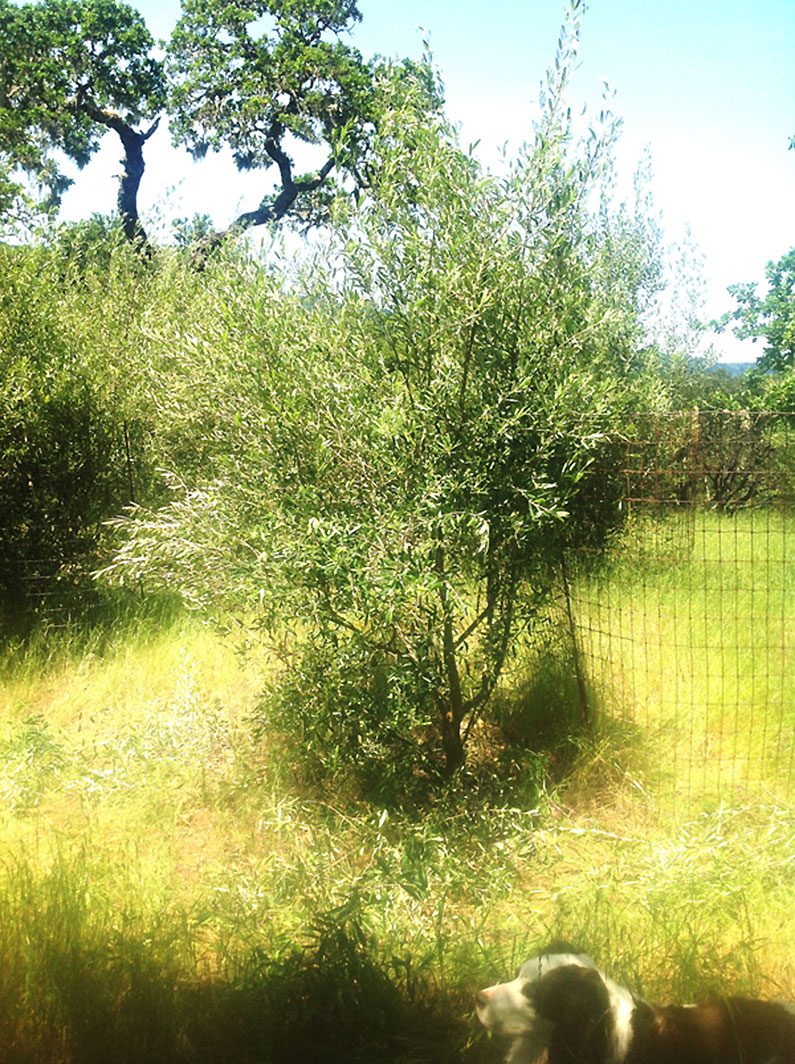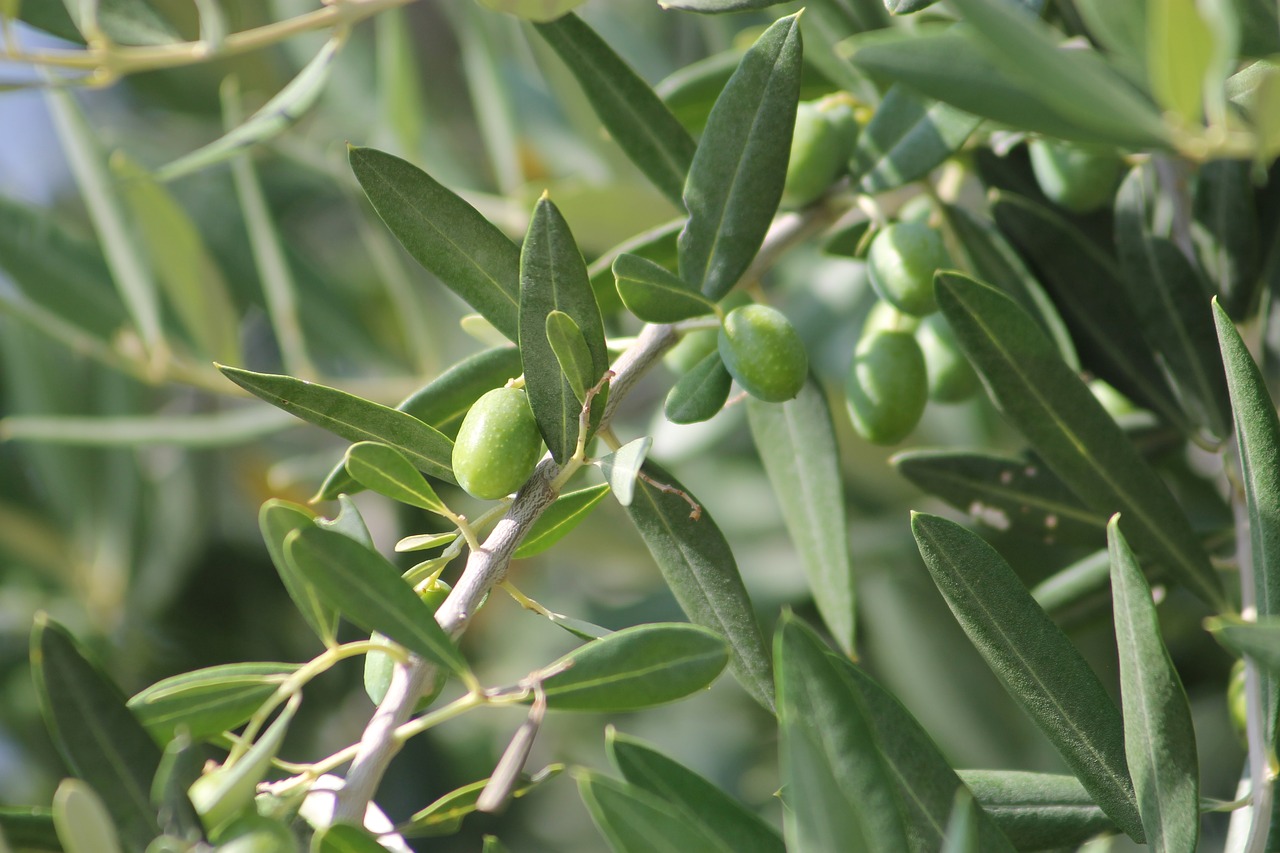This subject is a little off the topic of peonies, tulips, daffodils and other flowering bulbs but olives have taken a lot of my attention lately.
Adding the “Making them Produce Fruit” in my title is misleading as I planted twenty two Mission olive trees about seven or eight years ago and have only had a handful of little olives. A well known local expert, the owner of the most respected olive press in Glen Ellen initially suggested the variety to plant, the their location where the trees have been growing on a slight hillside and to water them for the first four years. It wasn’t his advice or the location that I could complain about. A neighbor is a tree expert and he suggested that I water them more. As they were on drip, something just wasn’t working as they should have produced years ago and are quite large now. Watering more apparently wasn’t enough or perhaps even adequate, so now the strategy has changed.
After attending a discussion on olive curing, I read about pruning, watering, fertilizing etc. and still wasn’t quite sure where to begin. At this point, I should add that the trees were wrapped in wire fencing to protect them from deer munching as I do not fence my whole property and they graze on the lower branches. But they are certainly no longer five gallon sized!
 Before any weeding or pruning! Fencing was impossible to remove completely.
Before any weeding or pruning! Fencing was impossible to remove completely.
As I learned a bit about what to do, I found that watering and weed control at the base of the tree are the most important things to work on. The wire kept the base of the tree from being adequately cleared around the base of the tree, and so yesterday I had my gardener start the process of removing the wire and dragging out the grass and weeds, including some kind of prolific purple flowered climbing weed that was cutting off light. Clearing out the middle and trying to let light hit every side branch at least for part of the day is the pruning goal. A goblet or vase shape is rather desirable and it will be a challenge to form these rather large and unruly trees into the right configuration. I did notice that the branches are covered with lots of little flower buds (I didn’t see them last year) so I have high hopes that at least some of the branches will fruit and I am hand watering them with a hose by letting it run for five minutes at a time per tree while I am pruning. After an hour or so of work, we walk back up through the pasture to rest for a while, and then we go down again for another hour. While I am working, Cedric is watching me from shady spots in the very tall grass which will be cut only when the hidden lupines finish blooming.
 One step at a time. I have pruned almost half of the trees today!
One step at a time. I have pruned almost half of the trees today!
This tree was the tenth I pruned today but I couldn’t get the wire completely away as it is held in place on one side with a rebar stake. Next week when the trees have all been cleared of weeks and fencing, I can finish this tree and make quick work of the last dozen of them. One shoot was too high for me to cut correctly, so a ladder will help with the finish.
Hopes are finally high for a crop in 2012!


Don’t know.